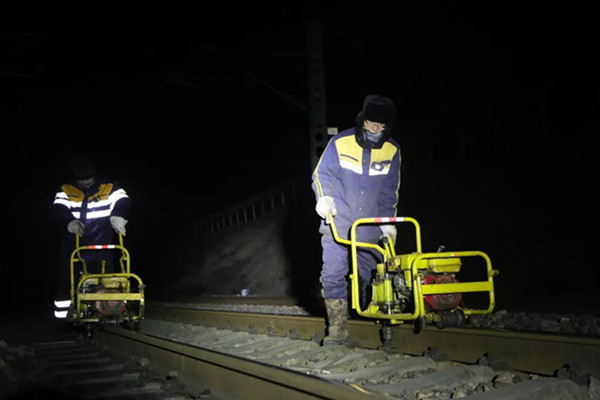Steel has strong cold resistance. Although it is strong and tough at low temperatures, steel rails are not only afraid of "cold" but also "freezing" in the face of severe winter weather.
As the infrastructure of railway transportation, how do rails prevent cold and frost?
"B-ultrasound" inspection
The northern winter is cold and windy, and the outdoor temperature drops below minus 20 degrees Celsius.
The internal stress of the steel rails is constantly decreasing, and it is very easy to produce "symptoms" such as cracks, nuclear injuries, and even broken rails, threatening the safety of railway transportation.
Railway flaw detectors use ultrasonic rail flaw detectors to check the internal structure of the steel rails. Just like a doctor doing a B-ultrasound on a patient.
Through the ultrasonic waves emitted by the rail flaw detector, the invisible damage hidden inside the railway rails can be found and the problem areas can be eliminated in time.

"Shaping and Plastic Surgery"
Frost damage is a safety hazard of railway roadbeds in cold areas.
Since the clay of the railway subgrade contains a large amount of water, it will freeze and expand in winter, making the originally straight and smooth rails bumpy and uneven, reducing the stability of train operation.
Line workers use precision instruments such as electronic track gauges and track inspection trolleys to accurately find the location of frost damage and determine the peak value of frost height. Through calculation, the height adjustment pad is inserted into the bottom of the rail, and the rail is "shaped and reshaped" with millimeter standards.
"Beauty" surgery
Winter is the peak period for coal transportation. Under the impact of high-intensity, high-frequency and heavy-loaded trains, fish scales, fat edges, abrasions, and falling blocks will appear on the surface of the railway rails.
The wrinkles, small pits, and small bags on the rail surface not only affect the appearance, but also affect driving safety.
Line workers use rail grinders to grind the steel rails in time, just like giving people beauty treatments. Grinding away the "wrinkles" and "spots" on the surface of the rails makes the rails smooth and smooth. It not only increases the appearance of the rails, but also extends the service life of the rails.
"Lifting and tightening"
A 1-kilometer-long line has 6,667 bolts. A 10-kilometer-long line has 66,670 bolts.
On the endless railway line, bolts are used to fix the steel rails and are also the key to line safety.
Regardless of severe cold or heat, or rain, snow, wind and frost, line workers carry a dozen pounds of internal combustion wrench along the line to tighten and reinforce each bolt to ensure the safety and stability of the track structure.
Cold winter
The railway rails face a huge test. Railway maintenance workers use all kinds of skills to protect the safety and smoothness of the railway artery.



Get In Touch